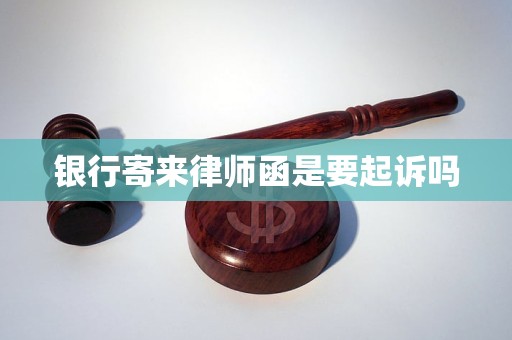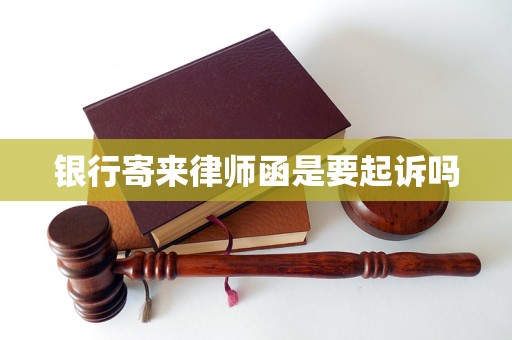Did the bank send a lawyer’s letter to sue?

A lawyer’s letter is a kind of legal document, which is usually issued by a law firm or lawyer on behalf of a client to express a legal or commercial position. The lawyer’s letter sent by the bank is usually a way for the bank to formally convey legal information to the lender or related customers. The purpose of sending a lawyer’s letter may include reminding or warning the defaulting party to abide by the terms of the contract, urging repayment, seeking a settlement plan or informing the next legal action. It doesn’t necessarily mean that the bank has decided to sue, but it sends a formal attitude and follow-up intention to the other party. If you receive a lawyer’s letter, it means that the matter has entered the legal process, and it is recommended to take it seriously.
Receiving a lawyer’s letter does not necessarily mean that the bank will file a lawsuit. Lawyer’s letter is more of a warning and urging function, which can be regarded as a preparatory measure before bank litigation. Many times, the bank hopes that the lawyer’s letter will urge the other party to take action, such as timely repayment or negotiation with the bank for a solution, so as to avoid both parties entering more complicated and time-consuming litigation procedures. Whether we can really go to the prosecution stage depends on whether we can communicate and resolve disputes. If we can take effective actions after the lawyer’s letter and reach an agreement with the bank, the lawsuit may be avoided.

Banks usually choose to send a lawyer’s letter first rather than directly sue because the litigation procedure is complicated and consumes time and resources. It is a low-cost and effective way for banks to send lawyers’ letters, which can make borrowers aware of the legal consequences and urge them to take action. This way can also show the sincerity of the bank and show its willingness to negotiate with the other party to solve the problem. The contents in the lawyer’s letter can make the borrower know the seriousness of breach of contract and the possible legal risks, increase the opportunity of communication and avoid further deterioration of the situation.
After receiving a letter from a bank lawyer, the most important thing is not to ignore or underestimate its seriousness. Read the lawyer’s letter carefully, and make clear the bank’s demands and requirements, as well as the possible legal provisions. Contact the bank or law firm as soon as possible to understand the specific situation and express the willingness to solve the problem. If the arrears are true but difficult to repay in one lump sum, you can take the initiative to negotiate with the bank for installment payment or adjust the repayment conditions. If you have any objection to the contents of the lawyer’s letter, you can seek the help of professional lawyers to protect your legitimate rights and interests. Failure to deal with the lawyer’s letter may lead to further escalation of the situation and even enter the actual litigation stage.

The content of the lawyer’s letter is usually very formal, and the specific requirements and warning language will reveal the possibility of legal proceedings. If the lawyer’s letter clearly mentions that if an obligation is not fulfilled, legal measures will be taken, which indicates that prosecution is more likely. The lawyer’s letter may include a detailed description of the breach of contract and relevant legal basis. If you are not sure whether the lawyer’s letter is directly related to the lawsuit, you can consult a legal professional to interpret it so as to better judge the next action to be taken.
If you choose to ignore or take no action after receiving the lawyer’s letter from the bank, it may lead to a series of adverse consequences. The bank is a lawyer’s letter to show its formal attitude. If the borrower does not respond, the bank may take further legal action, such as filing a lawsuit. If the problem is not solved in time, the breach of contract may further affect the personal credit record and cause credit stain. The litigation process may increase the other party’s attorney’s fees, legal fees and other additional expenses, which will increase the economic pressure. It is very important to deal with lawyers’ letters in time.

Under normal circumstances, after receiving the lawyer’s letter, there is still a chance to reach a settlement with the bank through consultation to avoid further legal proceedings. One of the purposes of the bank’s lawyer’s letter is to hope that the borrower will realize the seriousness of the question and take the initiative to seek a solution. Communicate with the bank and put forward reasonable solutions, such as rescheduling the repayment plan or partially paying the arrears. If the two sides can reach an agreement, the bank may be willing to give up the prosecution. From the legal point of view, reconciliation is usually a low-cost and controllable dispute settlement method.
After receiving the lawyer’s letter from the bank, if you can’t fully understand the content or don’t know how to deal with it, it is recommended to seek professional legal advice as soon as possible. Lawyers can help to interpret the contents of lawyers’ letters, analyze legal risks and give the best solutions. Especially in the case of large debts or complex contracts, it is very important to invite lawyers or legal advisers to intervene. Professional help can not only avoid unnecessary losses, but also help borrowers to safeguard their rights and interests by legal means, such as putting forward appropriate defenses or negotiation schemes.
